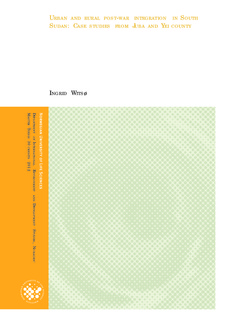| dc.description.abstract | On July 9th 2011 South Sudan declared its independence. A referendum was organized in January the same year where the vast majority voted for secession. It was the end of the second civil war with the Sudan. The two wars have had a major impact on the local population, and several millions have been displaced. For many of them, the end of the second civil war is the beginning of a new chapter in life. They start building up their lives in
the new country. The challenges of this process constitute the starting point of this thesis. The main objective of this study is to compare the challenges of returnees’ integration in Juba and Yei county. This kind of study is important due to the extent of return to post-war South Sudan and because of the impact integration has on those who return and on the new country.
The study is based on qualitative research methods. I did 41 semi-structured interviews and arranged two focus-group discussions with returnees, and interviewed representatives of the
government and various organisations in the country. The intention is to do a narrative analysis by presenting the views of these actors on the challenges of integration. In order to categorize the challenges and see how they have an impact on the returnees, I will use a
livelihood approach. By using this approach I hope to illustrate the connection between the household’s assets, the social factors and the wider context. In the first part of the analysis, I present the main challenges of integration separately and
illustrate that there are similarities and differences in Juba and in Yei county. Issues like education and health are important both places, while infrastructure and language are examples of differences between the research sites. While I present these challenges, I argue
that the returnees, the organisations and the government focus on the same issues but have different approaches and priorities. In the second part of the analysis, I state that the various
challenges cannot be treated separately nevertheless. Instead, it is necessary to look at how different assets are connected with one another and how they depend on social factors and the wider context. I will also illustrate that the government and the organisations in South Sudan emphasize the coordination of their work, but lose focus on the interconnectedness of
integration. Further, it is possible to question if their work is reflecting the returnees’ views on what the problems are. Hence, I find in-depth understanding of the key challenges necessary. This understanding must be based on the interconnectedness and interdependence between assets, social factors and the wider context. | no_NO |
